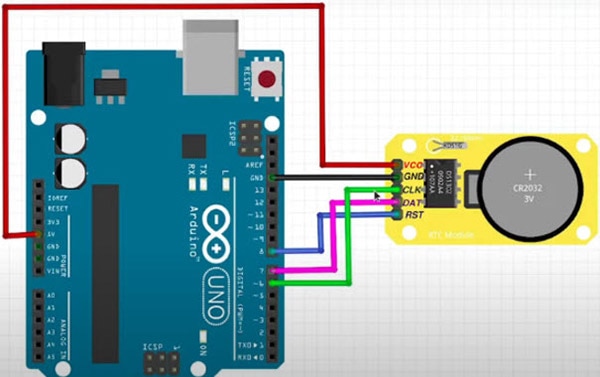DS1302 Real-Time Clock Module: A Reliable Timekeeping Solution
2024-08-26 | By Antonio Velasco
Working on projects, it can get easy to get used to using delays as a means of keeping time or configuring certain events to happen. Yet, these delays aren't always very consistent and can vary depending on some factors. Moreover, in a standalone system, they can be unpredictable or unreliable for longer-term usage. A solution to such a problem is to include a clock module in your designs in order to provide accurate timekeeping to your project. For this blog, we'll be talking about the DS1302 Real-Time Clock (RTC) module specifically, and how it works or can be used.
What Are Clock Modules?
Firstly, let's talk about what RTC modules even are. Simply put, they're a watch for your projects--something to keep consistent and accurate time for your MCU to rely on. It tracks seconds, hours, months, and even years, making it very reliable for the long run, and utilizes a simple three-wire interface (clock, data, and chip select/reset) to send data to your MCU. Furthermore, this specific model (DS1302) includes a slot for a battery, allowing you to provide a backup for it should the main power be cut off, letting it continue tracking time through any periods of outage. Another neat feature is the onboard RAM, giving it its own continuity should the battery backup fail. This component will continue counting the seconds no matter what!

Let's talk about how these RTCs work internally. In order to get the functionality to count, the module relies on an internal oscillator circuit. This oscillator will produce a signal, which will count every second. In order to do this, the oscillator is connected to a quartz crystal which resonates at 32,768 Hz, which is simply a power of 2^15. Being a large power of 2, it's easy for the module to use binary division to divide down using flip-flops. By the 15th flip-flop, the signal is now 1Hz, or 1 cycle per second, making it easy to count up.
Now, you might be wondering, why not just use a 1Hz crystal and call it a day? This seems like a very straightforward and simple approach but actually is impractical due to the nature of what a 1Hz crystal would look like. 1Hz crystals are extremely sensitive to temperature and environmental noise and would likely result in an inaccurate clock. Moreover, even if you were able to get a fairly stable 1Hz crystal, they are extremely hard to produce and can get very expensive.
Using the DS1302 in Projects
The DS1302 is very intuitive in design with its 3-wire communication system.

Here, you can see how it's easily incorporated with an Arduino Uno. Ensure that you download a compatible library with the DS1302 before using commands. For the sample code below, I used the "DS1302 by Rafa Couto" library.

You can see here how simple it is to use. The clock will produce an output with the getTime() function, which you can then call on a value for a second, minute, hour, day, month, or even year.
Conclusion
As you can see, the DS1302 RTC Module provides accurate timekeeping for any project! In the next blog, I'll talk about how my roommate, and I utilized it to create a beefed-up alarm clock that can wake up anybody!

Have questions or comments? Continue the conversation on TechForum, DigiKey's online community and technical resource.
Visit TechForum













 中国
中国